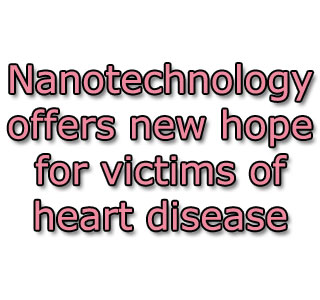
While conducting the research, nanoparticles with adult stem cells were instilled into the heart of pigs. Once the laser light heated up the nanoparticles, the arterial plaque was ascertained to be burnt away. The experts mentioned the lowered capability of nanoparticles to discard plaque in the absence of combined adult stem cells.
“This unique approach holds promise for use in humans for acute care and urgent restoration of blood flow. Biophotonics (light therapy), plasmonics (plasma therapy), stem cell therapy and nanotechnology might someday offer a completely novel treatment to reduce artery plaque build-up,†revealed Alexandr Kharlamov, M.D., lead author and research manager at the Department of Internal Medicine and Research Center of Regenerative Medicine, Ural State Medical Academy in Yekaterinburg, Russian Federation.
A general treatment for atherosclerosis is angioplasty wherein, the plaque is completely destroyed. During this treatment a balloon-tipped catheter may be threaded into a blocked artery and the balloon is enlarged to build back the blood flow. Although the balloon seems to be capable of squeezing plaque against the artery wall, it is unable to destroy it. As a result, 19 pigs belonging to the treatment group acquired silica-gold nanoshells and 18 animals from the control group gained saline solution.
The treatment group was further categorized in three subsets and given nanoparticles in three different ways. The first subset received it intracellularly along with adult stem cells infused into the heart. The second subset was provided through an infusion of gas-filled, protein-coated microbubbles that contained no stem cells. And for the third, nanoparticles were delivered through a bioengineered patch that also contained adult stem cells and was attached to the artery itself through minimally invasive surgery.
Kharlamov commented, “Nanoburning in combination with stem cell treatment promises demolition of plaque and functional restoration of the vessel wall.â€
A significant reduction in plaque volume was observed in the nanoparticle groups directly after the procedure. The experts revealed an average of 28.9 percent decline of plaque in the three groups. After a period of six months, plaque volume seemingly reduced on an average of 56.8 percent. Pigs in the control group were only given saline and a rise of an average of 4.3 percent elevation in plaque volume appeared.
Plaque volume seemed to be considerably decreased in the treatment groups provided with stem cells and nanoparticles. The other two groups which were given stem cells apparently displayed signs of new blood vessel growth known as neovascularization and alteration of artery function. In the pigs belonging to the microbubble treatment group, three cases of blood clots were supposedly registered.
The research is reported at the American Heart Association’s Basic Cardiovascular Sciences 2010 Scientific Sessions.
